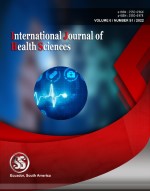Age estimation by dental parameters
Search continues
Keywords:
age estimation, attrition, root translucency, cementum annulations, root resorption, cementum appositionAbstract
Age estimation is one of the essential factors in forensics. The hardness and resilience of teeth to the external factors such as chemicals, putrefaction, and fire explosions makes ita reliable source in age estimation. Simultaneously they also undergo age-associated regressive changes. Although age can be estimated by various methods but each method has its own pros and cons. The present study was undertaken with the aim of evaluating three histological method using teeth. The objectives of the study also included assessment and comparison of two methods of age estimation employing multiple histological parameters, assessment of age estimation using single histological parameter, comparison of methods using multiple histological parameters with a single parameter method for age assessment. In our study we have found that method where multiple parameters were used gave us the better results however a variation in age assessment does exist and the search continues.
Downloads
References
Gustafson G. (1950). Age determinations on teeth. J Am Dent Assoc ,41, 45-54.
Johanson C.C. (1968). Transparent dentine in age estimation. Oral Surg , 25, 834-8.
Solheim T. (1990). Dental cementum apposition as an indicator of age. Scand J Dent Res ,98, 510-9.
Kvaal SI, Solheim T, Bjerketvedt D. (1996). Evaluation of preparation, staining and microscopic techniques for counting incremental lines in cementum of human teeth. Biotech Histochem , 71, 165-72.
PaewinskyE, Pfeiffer H, Brinkmann B. (2005). Quantification of secondary dentine formation from orthopantomograms – a contribution to forensic age estimation methods in adults. Int J Legal Med ,119,27-30.
Cameriere R, Ferrante L, Cingolani M. (2004). Precision and reliability of pulp/tooth area ratio of second molar as indicator of adult age. J Forensic Sci ,49(6), 1319-23.
Metska E, Stavrinos C, Vasiliadis L. (2009). Estimation of dental age using root dentine translucency. Surg J , 4(2), 21-28.
Lamendin H, BaccinoE, Humbert JF, Tavernier RM, Zerilli A. (1992). A simple technique for age estimation in adult corpses: the two criteria dental method. J Forensic Sci , 37, 1373-9.
Bang G, Ramm E. (1970). Determination of age in humans from root dentine transparency. Acta Odontol Scand , 28, 3-35.
Richards LC, Miller SL. (1991). Relationships between age and dental attrition in Australian aboriginals. Am J Phys Anthropol, 84(2),159-64.
Kim YK, Kho HS, Lee KH. (2000). Age estimation by occlusal tooth wear. J Forensic Sci , 45, 303-9.
Li C, Ji G. (1995). Age estimation from the permanent molar in northeast China by the method of average stage of attrition. Forensic Sci Int. ,75(2-3), 189-96.
Lipsinic FE. Paunovich E, Houston GD, Robison SF. (1986). Corrlation of age and incremental lines in the cementum of human teeth. J Forensic Sci , 31, 982-9.
Pundir S, Saxena S, Aggarwal P. (2009). Estimation of age based on tooth cementum annulations using three different microscopic methods. J Forensic Dent Sci ,1, 82-7.
Kashyap VK, Rao Koteshwar.NR. (1990) A modified Gustafson method of age estimation from teeth. Forensic Science International , 47, 237-247.
Rai B, Dhattarwal SK, Bhardwaj DN, Anand SC. (2006). Coronal displacement of cementum in impacted teeth: age detetmination. World J Med Sci , 1(2), 117-18.
Kagerer P, Grupe G. (2001). Age at death diagnosis and determination of life history parameters by incremental lines in human dental cementum as an identification aid. Forensic Sci Int , 118, 75-82.
Published
How to Cite
Issue
Section
Copyright (c) 2022 International journal of health sciences

This work is licensed under a Creative Commons Attribution-NonCommercial-NoDerivatives 4.0 International License.
Articles published in the International Journal of Health Sciences (IJHS) are available under Creative Commons Attribution Non-Commercial No Derivatives Licence (CC BY-NC-ND 4.0). Authors retain copyright in their work and grant IJHS right of first publication under CC BY-NC-ND 4.0. Users have the right to read, download, copy, distribute, print, search, or link to the full texts of articles in this journal, and to use them for any other lawful purpose.
Articles published in IJHS can be copied, communicated and shared in their published form for non-commercial purposes provided full attribution is given to the author and the journal. Authors are able to enter into separate, additional contractual arrangements for the non-exclusive distribution of the journal's published version of the work (e.g., post it to an institutional repository or publish it in a book), with an acknowledgment of its initial publication in this journal.
This copyright notice applies to articles published in IJHS volumes 4 onwards. Please read about the copyright notices for previous volumes under Journal History.
















